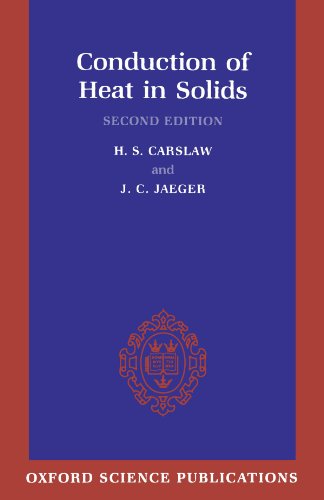Conduction of Heat in Solids ebook download
Par brunswick mary le vendredi, mai 20 2016, 04:37 - Lien permanent
Conduction of Heat in Solids by H. S. Carslaw, J. C. Jaeger


Conduction of Heat in Solids H. S. Carslaw, J. C. Jaeger ebook
ISBN: 0198533683, 9780198533689
Page: 517
Format: djvu
Publisher: Oxford University Press, USA
And Jaeger, J.C., Conduction of Heat in Solids, 2nd ed., Clarendon Press, Oxford, England, section 3.3, p. Transfer of heat within a fluid is by convection. Conduction transfers heat energy through one substance to another when they are in direct contact. The greatest flow of heat possible between materials is where there is a direct conduction between solids. Dutta, PHI, New Delhi Reference Books : 1. Such bad conductors of heat are called insulators. Conduction is essentially heat transfer through solids. Liquids: Most of the liquids transfer heat very well. Conduction of Heat in Solids – Carslow, H.S. Here are quick definitions, how they apply to your attic, and how to fix them: 1. Heat Transfer-Principles & Applications-Binay K. & Dewill, D.P –John Willey New York. Transfer of heat in solids is by conduction. An example of conduction through contact between two solids is a cooking pot on the solid surface of a hot stove. Heat energy is the result of the movement of tiny particles called atoms, molecules or ions in solids, liquids and gases. Fundamentals of Heat & Mass Transfer–Incropera, F.P. Heat can be transferred from one place to another by three methods: conduction in solids, convection of fluids (liquids or gases), and radiation through anything that will allow radiation to pass.